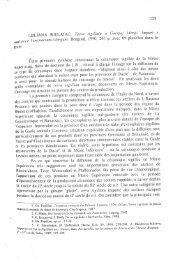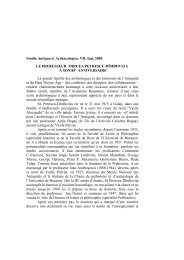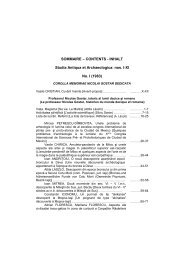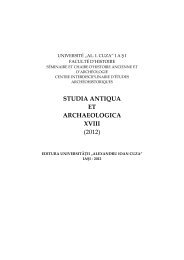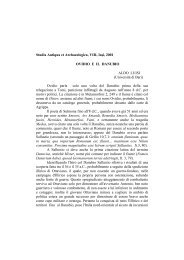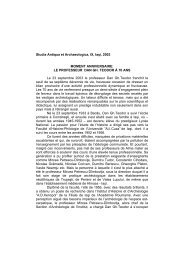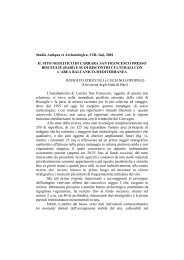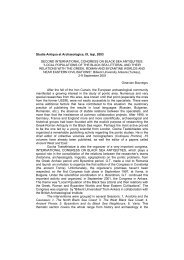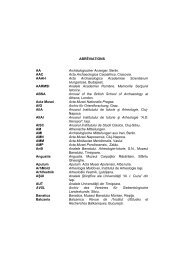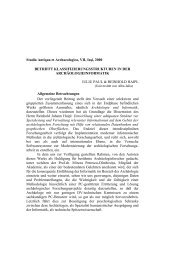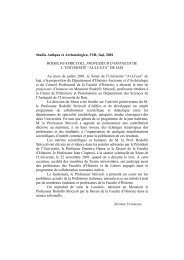VALERIU SÎRBU, Arheologia funerară şi sacrificiile: o terminolo
VALERIU SÎRBU, Arheologia funerară şi sacrificiile: o terminolo
VALERIU SÎRBU, Arheologia funerară şi sacrificiile: o terminolo
You also want an ePaper? Increase the reach of your titles
YUMPU automatically turns print PDFs into web optimized ePapers that Google loves.
206 COMPTES-RENDUS<br />
DUMITRU BOGHIAN,<br />
Începuturile istoriei omenirii [The beginnings of the history of<br />
humankind], Bucovina Istorică Press, Suceava, 2003, 349 p. (105<br />
figures in text)<br />
Appeared in the Archeology series of the publishing house, the<br />
volume has the character of a academically course, being presented by<br />
the author, in the Argumentum, that opens the work, as a “modest attempt<br />
to guide the steps of the students and everyone interested on the path full<br />
of obstacles of knowing the most distant past of mankind”.<br />
The first chapter, Prehistory - start of history (p. 7-20) wants to<br />
familiarize the reader with general and methodological problems tied to its<br />
study: it presented a short history of the various definitions and manners<br />
of approach of the historical study of the beginnings of human society<br />
together with their most representative figures. After a general chronology<br />
of the discussed period, the author continues with a general look over the<br />
interdisciplinary demarche, necessary for studying thoroughly the different<br />
aspects of prehistory. In the next parts of the first chapter are enumerated<br />
and defined the main connected disciplines with the way that they interact,<br />
having as final goal a deeper knowledge of the remote past of mankind.<br />
The second chapter, Nature and man in prehistory (p. 21-32), after<br />
a series of General considerations, witch underlines the importance of the<br />
geographical environment for the historical evolution of man, as well as a<br />
general review of the geological ages in witch this evolution takes place<br />
(The characteristics of natural environment in prehistory), we find a<br />
detailed description of the quaternary, observing the climacteric<br />
phenomenon (the glaciations) and the evolution of fauna and flora (The<br />
natural environment of quaternary).<br />
The third chapter, The process of anthropogenesis (p.33-60), after<br />
the presenting of two most important theories concerning the origins of<br />
man (creation and evolution) and their main supporters, follows the<br />
biological process of formation of the human being, describing in detail all<br />
known stages of the evolution of human type, starting from hominids to<br />
Homo sapiens recens.<br />
The fourth chapter, The development of hunter-gatherer societies.<br />
Paleolithic and Epipaleolithic-Mesolithic (p. 61-144) starts with a short<br />
definition of the period and a quick exposition of the chronological<br />
problems. Then, each period is detailed, through the main archeological<br />
cultures, being treated both material (the specific characteristics of the<br />
stone tools, dwellings) and spiritual aspects (where these are identifiable




